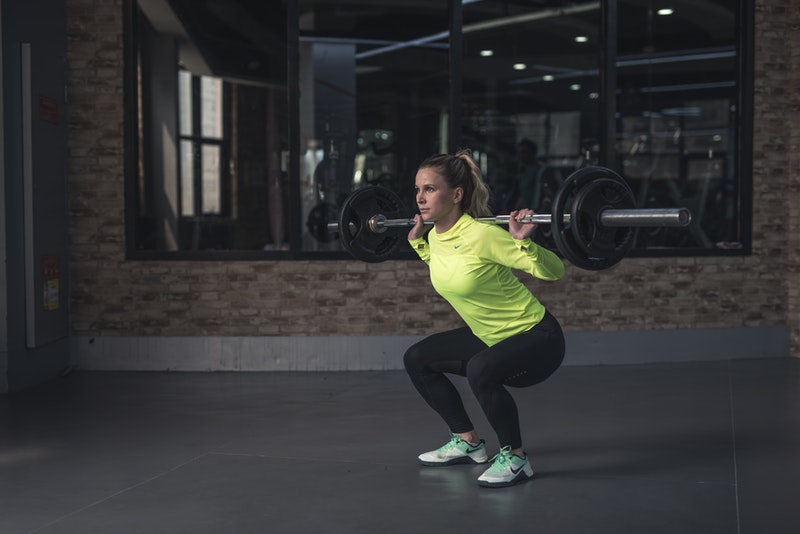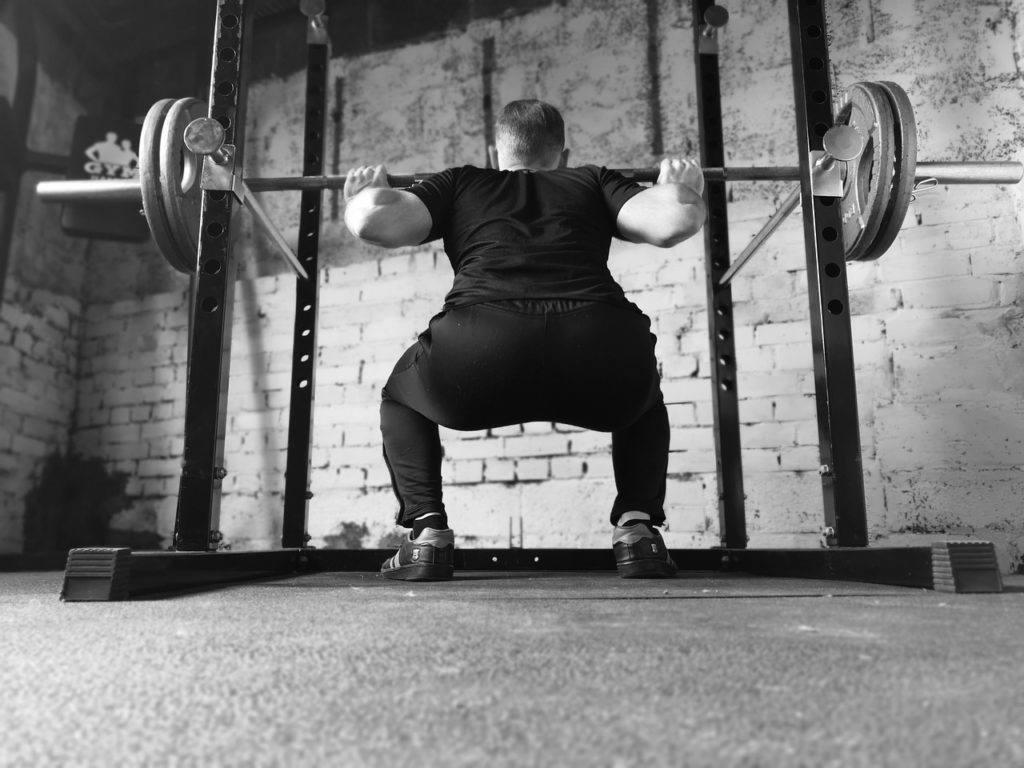If you’re wondering whether it’s harder for tall guys to squat, then you’ve come to the right place.
In this article, we debunk some common misconceptions as to why people think squatting is harder for tall people and share some simple tips on making squatting easier.
Is Squatting Harder If You’re Tall?
Assuming all your joints are in working order, squats aren’t harder for most tall people. Squats are an effective and time efficient exercise. You should not be discouraged from squatting if you are tall.

Why Some People Believe That It’s Harder For Tall People To Squat
Tall people have a bigger range of motion
It is true that the taller you are, the further the bar will travel up and down. This means that per rep, you are doing more work.
But it’s also true that YOU are bigger, Mr. Tall Person. Your skeleton is bigger and you carry more muscle mass.
By doing more work per rep you are getting a higher training stimulus. That’s a win!
Tall people typically have longer arms
Okay, now here’s a legitimate challenge some tall people face.
If your shoulders are jacked up, you may have a difficult time getting your hands around the bar. You may need to use a very wide grip.
The problem is, most bars are an arbitrary 2.2 metres long, and most bars sit in racks that are 1.1 metres across.
You have to unrack the bar, walk it out, then slide your grip out. This is not easy!
Then, as you walk the bar in, you have to bring your hands back in, or run the risk of getting your hand caught between the bar and the rack.
Both of these options can be painful if you have shoulder restrictions.
7 Squatting Tips For Tall Guys
Adjust your stance
The most common style of squatting involves sitting straight between the legs with a fairly narrow stance, roughly shoulder width apart.
Some people misunderstand the stance width, and bring their feet in narrower.
This doesn’t allow the hips to sit in, so they have to displace backwards.
If you are taller and have a long torso, this displacement is magnified and you’re going to have a harder time standing back up.
At the extreme end of this, you can shift the majority of the work over to your hips and posterior by adopting a wide, powerlifting-style squat.
This effectively eliminates any ankle restriction.
Everyone’s bone structure is different, so there is no universal squat stance. But do be sure to at least give hips space to sit between your legs.
Use weightlifting shoes
Some lifters have ankle restrictions and benefit from a slight heel elevation.
Weightlifting shoes have a solid, elevated heel that allow for less demand on the ankle, and a more upright posture.
A counterargument to buying weightlifting shoes is the cost. True, a good pair is pricey, but you can also expect them to last a decade.
If you train three times per week and break down the cost of purchase over a decade, it’s pennies per workout.
Cut the depth
I’m going to tell you a secret. You don’t have to squat ass-to-grass. You’re allowed to squat just below parallel. It’s okay! I give you permission.
In fact, this is exactly what all powerlifters do in order to squat the most weight.

Use a specialty bar
If your shoulders are restricted and you are experiencing pain when you squat, a safety squat bar or a cambered bar can give you some relief.
This allows you to work around the restriction while you sort it out, while still training heavy.
Include front squats
Some lifters feel more comfortable with the more upright torso angle that the front squat allows.
I am not advocating comfort as a priority. Squats are supposed to be hard!
But front squats are great for building your quads and mid-back, which can carry over to stronger squatting. There is nothing wrong with biasing one over the other.
Be warned that front squats will feel much worse if you have ankle restrictions, as there is greater demand on the ankle. You cannot sit back to achieve depth.
Use both if you can!
Adjust the bar placement on your back
Carrying the bar higher or lower on the traps may help.
Lower reduces the range of motion a small amount, and may allow you to sit back a bit more to reduce the demand on the ankles.
If you are long armed and have issues with your grip, playing around with the bar placement on the back can also be useful. Go with where your shoulders are happiest.
Use a monolift
Okay, this is an extreme example!
Monolifts are large racks dedicated to squatting. They have hydraulic jacks for adjusting the bar height, and swinging hooks that eliminate the need to walk out the bar.
You get under the bar, you stand up, and a helper operates a lever that moves the hooks out of the way. You do your squats, then the helper replaces the hooks. Convenient!
If you have grip issues as a result of your height, having access to a monolift can be a godsend.
The hooks are adjustable in width. This allows you to access the ends of the shaft by the collars, without risking your hands getting pinched.
How NOT To Squat As A Tall Guy
Elevate Your Heels On A Plate
Many lifting enthusiasts have seen the iconic black and white photo of the late Dave Draper squatting four plates, as Arnold Schwarzenegger looks on.
Dave, also known as The Blond Bomber, has his heels elevated on a plank of wood.
You can also elevate your heels using small weight plates.
Dave Draper was a very nice man. I have his autograph! But not everything the old school bodybuilders did was a great idea.
While the principle is the same as weightlifting shoes, don’t elevate your heels with wood or plates. It is not great for your feet, and can be dangerous. You don’t want to slip with a heavy bar on your back.
Weightlifting shoes, on the other hand, are stable. If your squat benefits from an elevated heel, invest in the shoes.
Can You Be Too Tall For Squats?
There’s no such thing as being too tall for squats. If your joints can safely pass through the range of motion required, squats are a productive exercise that strengthens the body systemically.
The best squatters in the world are, without exception, extremely tall.
Of course, if you search the internet you can find plenty of people who will tell you otherwise. It makes for an enticing headline, I admit. Still, these people are wrong.
You click on their YouTube video and they pick up a couple of pennies in ad revenue. Then you switch normal squats out for rear-foot elevated split squats. Your strength potential suffers as a result.
Why should you believe this article over the myriad of YouTube videos saying the opposite? I mean, the site you are reading collects ad revenue too.
This article was written by a tall strength coach who also competes in powerlifting. I’ve spent my career coaching people to squat pain-free. Many of them are much taller than me.
Not once in the past decade have I seen height to be a limiting factor in the squat.
That’s all for this article, but perhaps you’re wondering what to superset with squats? Or how many squats can a 14 year old do?
Hope this helped!
Sources
I’ve been in the fitness and strength training industry for nearly a decade. In that time, I’ve gained 30 pounds of muscle, written hundreds of articles, and reviewed dozens of fitness supplements. As for my educational background, I’m a currently studying for my Active IQ Level 3 Diploma in Personal Training.

